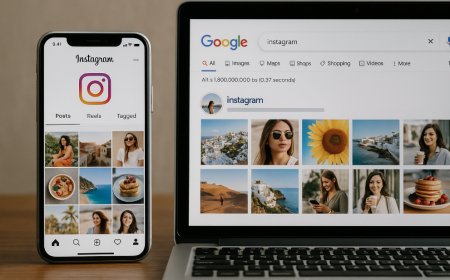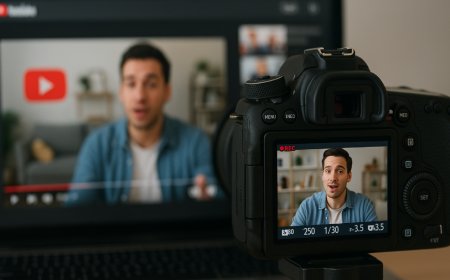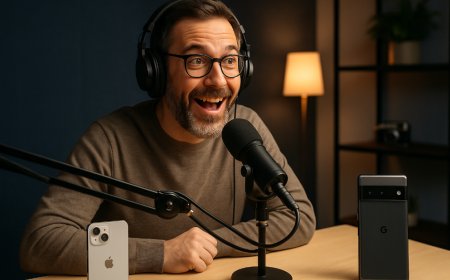The Microphone Revolution: How a Humble Device Transformed Communication, Creativity, and Culture
From analog to AI, discover how microphones have reshaped music, content creation, remote work, and everyday life in a connected digital world.

Introduction: The Tiny Device That Changed Everything
Microphones are everywhere—from boardrooms to bedrooms, stages to smartphones. Yet, their profound impact on our world often goes unnoticed. What began as a technical tool for amplification has quietly evolved into the backbone of modern communication, entertainment, and even artificial intelligence.
This is not just a story of sound—this is the story of how microphones revolutionized human expression, creativity, and connection.
The Birth of the Microphone: From Telegraphs to Telephony
The roots of the microphone date back to the late 1800s, when inventors like Emile Berliner and Thomas Edison were experimenting with voice transmission. Originally created to amplify telephone calls, the early microphones used carbon granules to convert sound vibrations into electrical signals.
This innovation marked the beginning of an audio revolution. Suddenly, human voice could be captured, amplified, and transmitted across distances—paving the way for radio, public address systems, and eventually, recorded music.
Radio, Recording, and the Rise of Mass Communication
As microphones improved through the 20th century, they became instrumental in broadcasting and entertainment. Radio shows, political speeches, and live performances reached millions, fundamentally altering how people received information and experienced culture.
In music, microphones transformed recording studios into creative playgrounds. Legendary producers began to experiment with mic placement, tonal range, and acoustic manipulation—giving rise to the signature sounds of entire musical eras.
From Billie Holiday's smoky vocals to the raw energy of punk rock, microphones were no longer just tools—they became instruments in their own right.
The Digital Turn: Microphones Meet Computers
By the 1990s and early 2000s, microphones had found a new partner: the computer. With the rise of digital audio workstations (DAWs), USB mics, and home recording equipment, what once required a professional studio could now be done on a laptop.
This democratization of audio technology gave rise to new forms of content:
-
Podcasts: What began as niche internet broadcasts became one of the most popular storytelling formats globally.
-
YouTube and Streaming: Creators armed with condenser mics and boom arms turned bedrooms into broadcast studios.
-
Online Gaming & Streaming: Clear in-game communication became essential, and microphone quality started to influence audience engagement on platforms like Twitch.
The microphone was no longer just a utility. It was now an essential gateway to the creator economy.
The Work-From-Home Era: Microphones in the Professional World
Then came the pandemic.
Suddenly, Zoom calls, webinars, virtual classrooms, and online interviews became daily routines. For the first time, people realized: how you sound affects how you’re perceived.
As a result, sales of high-quality microphones surged. Whether you were a CEO, teacher, or job seeker, sounding professional mattered.
This shift wasn’t just about clarity—it was about presence. In virtual environments, your voice often replaces your physical presence. A good microphone ensures you're heard—not just audibly, but credibly.
Voice Assistants, AI, and the Next Generation of Microphones
The microphone’s evolution hasn’t stopped at media and meetings. It’s now a critical enabler of artificial intelligence and voice-first interfaces.
From Amazon Alexa and Google Assistant to smart cars and AI transcription tools, microphones are at the center of the voice revolution. These aren’t your average mics—they include:
-
Far-field microphone arrays
-
Noise cancellation algorithms
-
Wake word detection
-
Real-time audio analysis
With the help of AI, microphones don’t just capture voice—they interpret intent, detect emotion, and even identify individual users.
We're entering a world where speaking is the interface—and microphones are the sensors making it possible.
Microphones and Accessibility: Giving Voice to More Voices
Another often-overlooked aspect of the microphone revolution is its role in accessibility and inclusivity.
For individuals with visual impairments, physical disabilities, or reading challenges, voice technology offers a new level of independence. Tools like voice typing, audio prompts, and screen readers—powered by microphones—are opening doors to communication and productivity that were once closed.
In many ways, microphones are helping technology adapt to humans, rather than forcing humans to adapt to technology.
Art Meets Audio: Creative Uses of Microphones Today
The microphone has also become a symbol of artistic freedom. Musicians are no longer restricted to recording in traditional ways. Foley artists use mics to capture real-world sounds. ASMR creators push microphones to the edge of human perception. Poets and performers use live mics to amplify activism and identity.
Even the low-fi aesthetic—distortion, proximity effect, pops, and hisses—is now a style choice rather than a flaw. What was once a limitation has become a creative fingerprint.
Whether in a podcast studio or a street corner, the mic has become an extension of the artist.
Choosing the Right Microphone: A Tool for Every Voice
With such a variety of uses, it's no surprise that microphone technology has diversified. There’s no one-size-fits-all. The market today includes:
-
Dynamic microphones: Durable and ideal for live vocals or streaming.
-
Condenser microphones: Sensitive and detailed—perfect for studio vocals or podcasts.
-
Lavalier microphones: Discreet and wearable—used in interviews or broadcasting.
-
Shotgun microphones: Directional mics for film and field recordings.
-
USB microphones: Plug-and-play convenience for creators and remote workers.
Each serves a unique purpose. What matters is choosing a microphone that suits your voice, environment, and audience.
The Future of Microphones: Where Are We Headed?
Looking ahead, microphones will likely play an even greater role in:
-
Wearables and health monitoring: Detecting breathing patterns, coughs, or vocal strain.
-
Immersive AR/VR environments: Capturing 3D spatial audio for hyper-realistic experiences.
-
Biometric security: Using vocal signatures as authentication methods.
-
Multilingual communication: Real-time translation through voice input.
As AI advances, microphones will continue to merge with software, giving rise to intelligent listening systems that go far beyond audio capture.
Conclusion: A Quiet Revolution That’s Loud in Impact
The microphone may be small, but its influence is massive. It has empowered individuals, amplified movements, created billion-dollar industries, and reshaped how we live, learn, work, and play.
What's Your Reaction?
 Like
0
Like
0
 Dislike
0
Dislike
0
 Love
0
Love
0
 Funny
0
Funny
0
 Angry
0
Angry
0
 Sad
0
Sad
0
 Wow
0
Wow
0












































